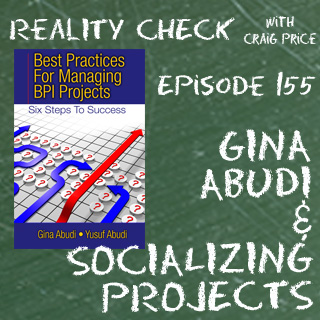 First, let’s define a “needs assessment.” According to Wikipedia, a “needs assessment is a process for determining and addressing needs, or “gaps” between current conditions and desired conditions, often used for improvement projects in education/training.”
First, let’s define a “needs assessment.” According to Wikipedia, a “needs assessment is a process for determining and addressing needs, or “gaps” between current conditions and desired conditions, often used for improvement projects in education/training.”
A needs assessment should address the following:
- Knowledge: What an individual needs to know in order to do his/her job.
- Skills: What an individual must know in order to perform the day-to-day tasks associated with his/her job.
- Competencies: The combination of knowledge, skills, attitude, values and motivations an individual must have in order to be successful in his/her job.
Step I to Conducting an Effective Needs Assessment: Data Gathering
Prior to conducting a needs assessment of individuals within the organization, you need to determine the types of skills, knowledge and competencies required – what do the employees of the organization – from junior levels to senior levels – require to be effective in their roles within the organization? Keep in mind the company’s culture when determining the skills, knowledge and competencies required. For example if the organization is a flat organization with much autonomy given employees, it would be difficult for an individual who prefers a hierarchical, very structured organization to be effective within the organization. Likewise, an individual who is used to significant autonomy to do his/her job would find it difficult to have to frequently report to his/her manager.
There are a variety of ways to gather data to get the information you need, including:
- Interviews with employees
- Online questionnaires/surveys
- Data from human resources and/or business units
All of these will be discussed in further detail.
It is recommended that for interviews and online questionnaires you set up a pilot group to test your questions to ensure that you are getting the information you need. By pilot testing, you can ensure that the questions are read and understood the same way by each individual. The last thing you need is to get results back that are useless because each individual interpreted a question differently and, therefore, responded differently based on his/her interpretation of the question.
Begin to gather data by looking at the best performing individuals within the organization and determine what they have in a combination of skills, knowledge and competencies that makes them successful. These might be considered your high potential employees – individuals who are good candidates for senior leadership roles in the future. But don’t just consider the “high potentials,” look at individuals who are great at what they do, even if they might not be good candidates to lead the organization in the future.
Interviews
Interviews can be done in small groups (also called focus groups) or one-on-one, and either in person or via the telephone. I have used all of these options successfully, depending on the situation and the purpose of the interview. The purpose behind interviewing is to obtain data from a variety of sources on:
- What skills and knowledge individuals must have to be effective within the organization overall and to be effective in the organization in specific roles
- What are some of the challenges that individuals face on a daily basis in their roles
- What are the characteristics and behaviors of those considered the best (most effective, versatile, etc.) in their roles
- What are the characteristics and behaviors of those who are not considered effective in their roles
- What are the long term objectives of the organization – where will the organization be in 3 years, 5 years, 10 years etc. – and what type of individual is needed to get it there
In interviews, you are able to follow up with additional questions based on the responses that you are receiving from those being interviewed. This will help you gather even further data and refine the data you have.
Online questionnaires
I have used online questionnaires both stand-alone (in place of interviews) and also as a pre-data gathering tool prior to the interview. In the case of using the online questionnaire to gather data prior to the interview, I will then use the interview as a follow up to the questionnaire to probe a bit deeper on the responses.
Your questions may be a combination of multiple choice, open ended, yes/no, or a Likert (ranking) scale. Choose what makes the most sense based upon the data you are trying to gather and the decisions you are trying to make.
There are a variety of tools at low cost for producing questionnaires that will also roll up the results for you. These include SurveyMonkey and QuestionMark, along with others. There are also a few free online survey tools. Just be sure any tool you use will provide you the results in the format required and enable you to save your data for future use.
Data from Human Resources and/or Business Units
The human resources department and/or business units can provide you a variety of information to supplement your data gathering, including:
- Retention rate of staff – including background information on those who have left the organization
- Promotions – including background information on those who have been promoted
- Roles and responsibilities/job descriptions of various staff positions
- Company mission statement and vision
- Long term strategic goals
This data is best used in conjunction with other data gathering methods, such as the interviews and questionnaires described above. Use this data to look for trends – for example, if the long term strategic goals of the organization include acquisitions of other organizations, and no one on the management staff currently has a background in this area, you would want to ensure that future managers have such skills in managing acquisitions. In this situation, you would want to determine what skills are required for someone to be effective at acquiring companies, managing those companies and integrating them into the organization. In addition to in-house data, you may choose to review research, industry data, and other sources for information to help you reach your end goal.
Remember that this type of data gathering can often be sensitive within organizations, so you want to be clear what you are looking for and why and how it will be used. Maintain confidentiality at all times.
Use all of this data to assess individuals toward the development of a comprehensive competency model to be used organization-wide.
Part II of this post will look at conducting a competency-based assessment.
References
A Practical Guide to Needs Assessment, Author: Kavita Gupta; Publisher: Jossey-Bass/Pfeiffer, 1999. This book provides a great step-by-step guide and tools/templates to use! I have used this as a reference for many client engagements.


